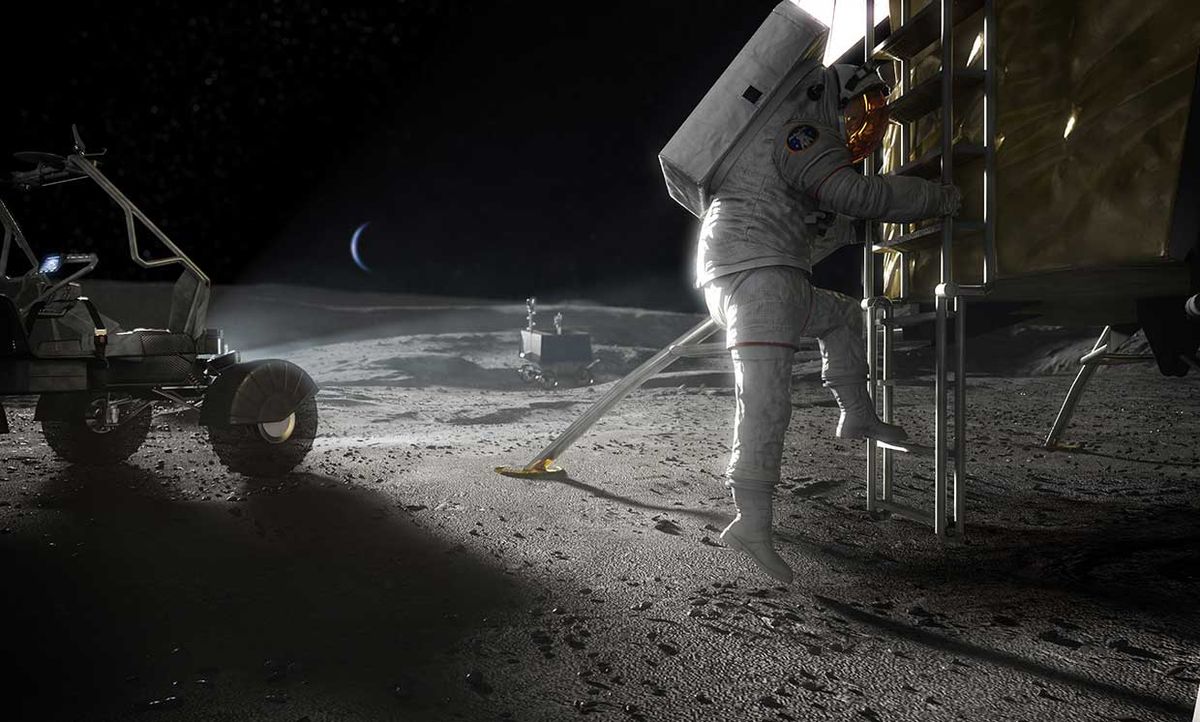Standing up a 4G/LTE network might seem well below the pay grade of a legendary innovation hub like Nokia Bell Labs. However, standing up that same network onthe moon is another matter.
Nokia and 13 other companies — including SpaceX and Lockheed-Martin — have won five-year contracts totaling over US$ 370 million from NASA to demonstrate key infrastructure technologies on the lunar surface. All of which is part of NASA’s Artemis program to return humans to the moon.
NASA also wants the moon to be a stepping stone for further explorations in the solar system, beginning with Mars.
For that, says L.K. Kubendran, lead for commercial space technology partnerships, a lunar outpost would need, at the very least, power, shelter, and a way to communicate.
And the moon’s 4G network will not only be carrying voice and data signals like those found in terrestrial applications, it’ll also be handling remote operations like controlling lunar rovers from a distance. The antennas and base stations will need to be ruggedized for the harsh, radiation-filled lunar environment. Plus, over the course of a typical lunar day-night cycle (28 earth days), the network infrastructure will face temperature extremes of over 250ºC from sunlight to shadow. Of course, every piece of hardware in the network must first be transported to the moon, too.
“The equipment needs to be hardened for environmental stresses such as vibration, shock and acceleration, especially during launch and landing procedures, and the harsh conditions experienced in space and on the lunar surface,” says Thierry Klein, head of the Enterprise & Industrial Automation Lab, Nokia Bell Labs.
Oddly enough, it’ll probably all work better on the moon, too.
“The propagation model will be different,” explains Dola Saha, assistant professor in Electrical and Computer Engineering at the University at Albany, SUNY. She adds that the lack of atmosphere as well as the absence of typical terrestrial obstructions like trees and buildings will likely mean better signal propagation.
To ferry the equipment for their lunar 4G network, Nokia will be collaborating with Intuitive Machines — who’s also developing a lunar ice drill for the moon’s south pole. “Intuitive Machines is building a rover that they want to land on the moon in late 2022,” says Kubendran. That rover mission now seems likely to be the rocket that’ll begin hauling 4G infrastructure to the lunar surface.
For all the technological innovation a lunar 4G network might bring about, its signals could unfortunately also mean bad news for radio astronomy. Radio telescopes are notoriously vulnerable to interference (a.k.a. radio frequency interference, or RFI). For instance, a stray phone signal from Mars carries power enough to interfere with the Jodrell Bank radio observatory in Manchester, U.K. So, asks Emma Alexander, an astrophysicist writing for The Conversation, “how would it fare with an entire 4G network on the moon?”
That depends, says Saha.
“Depends on which frequencies you’re using, and…the side lobes and…filters [at] the front end of the of these networks,” Saha says. On Earth, she continues, there are so many applications that the FCC in the US, and corresponding bodies in other countries, allocate frequencies to each of them.
“RFI can be mitigated at the source with appropriate shielding and precision in the emission of signals,” Alexander writes. “Astronomers are constantly developing strategies to cut RFI from their data. But this increasingly relies on the goodwill of private companies.” As well as regulations by governments, she adds, looking to shield earthly radio telescopes from human-generated interference from above.
Payal Dhar (she/they) is a freelance journalist on science, technology, and society. They write about AI, cybersecurity, surveillance, space, online communities, games, and any shiny new technology that catches their eye. You can find and DM Payal on Twitter (@payaldhar).



